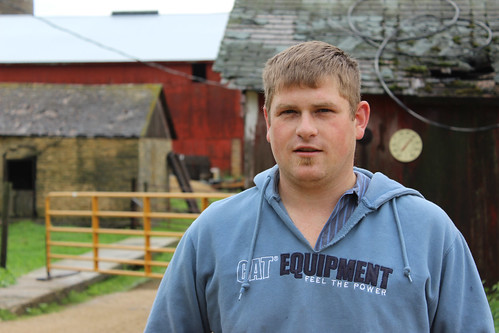
At age 8, Russell Wire knew he liked agriculture. That was when he raised some beef cattle for a 4-H project, eventually turning that project into a herd of 40.
This natural affinity makes sense—Wire, who lives in northwest Illinois, comes from a farm family. The 28-year-old is actually a fifth-generation farmer.
Since 2005, Wire has worked 40 acres of pastureland, and he’s grown corn on another 50 acres since 2011. Recently he decided to incorporate cover crops into his operation to provide more forage for his herd, prevent erosion and improve soil health.
He sought guidance from specialists at USDA’s Natural Resources Conservation Service to help make decisions and plans for successfully growing and managing cover crops.
Late summer 2012 was Wire’s first year planting cover crops. He opted for a mix of annual ryegrass and tillage radish. He likes the fact that he is able to do something different for a conservation solution that will sustain his operation.
Wire used a no-till drill to seed the radishes. While the right soil temperatures are important for success, 2012’s drought conditions threatened good seed germination. Luckily, a late September rain saved the day and he was able to grow a good, healthy cover crop.
At the same time, Wire allowed forage on his pastures to grow to a height of about 20 to 24 inches. This made high moisture haylage available for the herd.
Because of the pasture’s location, he uses his cropland to grow hay instead of using it for livestock grazing. He cuts the forage when it’s ready, then bales it for later use.
According to Wire, the best part about cover crops is that they improve the health of his soil. He’s also happy to see fewer weeds due to the annual ryegrass’ dense foliage.
He’s found that the radishes effectively break up soil compaction and bring valuable nutrients back to the surface for other crops to use.
Wire is pleased with the results of his new techniques. He can watch his cover crops grow, provide quality hay and feed for his cattle, and hold back erosion. And he’s a pioneer in his area.
“A lot of people are watching me to see how it works,” he says.
Follow NRCS on Twitter.
Check out other conservation stories on the USDA blog.

